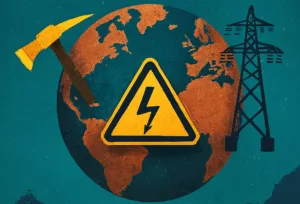Published in La República
On January 1st, the new local leaders in Colombia took office, including the mayors of the country’s largest cities. They were welcomed with great enthusiasm in cities like Medellín, Cali, and Bogotá, and over the next four years, they will have the opportunity to implement the government plans for which they were elected.
In the coming years, I hope to see whether these new leaders understand the role cities must play in the energy transition—and that this is not a conversation disconnected from their mandates or one that should be led solely by the traditional centralism that characterizes the most important decisions in the country’s direction. Quite the opposite.
According to World Bank data, 56% of the global population lives in cities, and by 2050, this number is expected to grow, doubling the number of urban dwellers. In other words, it is projected that 7 out of 10 people in the world will live in a city. This implies greater resource usage and, of course, increased energy consumption.
So far, energy transition plans and policies have been discussed at the national government level, but what are the major cities—key players in designing a sustainable future—thinking? Cities are major energy actors, and this presents technological, economic, and planning challenges.
It is clear that cities in Latin America face countless challenges and have limited resources, particularly since the region has one of the highest levels of urban concentration in the world. These urbanization challenges demand integrated planning that not only considers energy resources to power its citizens but also explores how to make cities more sustainable places to live.
Although cities like Bogotá and Medellín have made some progress with initiatives that tentatively aim to move toward becoming smart cities (more so the latter than the former), these efforts should gain more traction in the coming years. Citizens should also be informed about the plans to improve quality of life and develop cities in a sustainable and organized manner.
This involves significant investments, planning, and a long-term vision that transcends the ideologies of current officials. More importantly, it means understanding the energy needs of citizens and addressing public transportation systems, which are a headache for most cities.
A good example of what is happening in Latin America is the Smart Rio Project, a modernization project of public lighting and smart city infrastructure in Rio de Janeiro. The goal is to reduce electricity use for public lighting by 40 to 60 percent. The project will also support the city’s ongoing digitalization of public services.
One notable feature of the Smart Rio Project is its focus on breaking the trend of inequitable infrastructure investment. It begins with upgrading public lighting in the city’s most underserved areas, which are usually the most violent, have minimal state presence, and are poorly lit.
Understanding cities’ energy needs and planning around them and new technologies—recognizing that cities are fundamental agents in decarbonization and net-zero plans—is essential for shaping the cities of the future. In this, mayors are key actors in building green, decarbonized cities.
Carolina Rojas Gómez
Student, Executive Master of Management in Energy
BI Norwegian Business School


